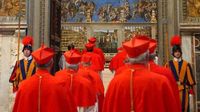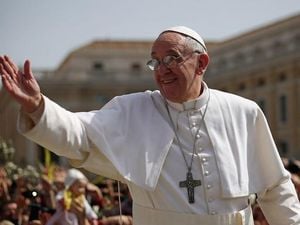Pope Francis has passed away on Monday, April 21, 2025, at the age of 88 in his residence at Casa Santa Marta in the Vatican. As the 266th pontiff of the Catholic Church, his death marks a significant moment in the history of the Church, prompting the activation of the conclave process to elect his successor.
The conclave is the method by which the Catholic Church selects a new Pope after the death or resignation of the previous pontiff. This term originates from the Latin "cum clave," meaning "under lock," reflecting the tradition of isolating the electing cardinals from the outside world until a decision is made. For centuries, this procedure has been crucial for the Catholic Church, ensuring an orderly transition in its spiritual leadership.
Following the announcement of Pope Francis's death, the Vatican has initiated detailed rituals based on longstanding traditions that govern the end of a papacy and the commencement of the next. Cardinal Kevin Farrell, the current camerlengo since 2019, will oversee the Church's ordinary affairs during this "sede vacante" (vacant see) period. His role includes officially confirming the Pope's death, a procedure that now requires a medical certificate.
Approximately 15 to 20 days after the Pope's death, the conclave will commence. This gathering will take place in the Sistine Chapel, where 139 cardinals under the age of 80 will be responsible for electing the new Pope. Before the conclave begins, all cardinals participate in a mass at St. Peter's Basilica, after which they are led to the Sistine Chapel. Cardinals over 80 years old, who do not have voting rights, will leave the room before the chapel is locked, marking the official start of the conclave.
During the conclave, the cardinals are isolated from the outside world, with no access to phones, the internet, or any contact with outsiders. This isolation is intended to ensure that the election occurs without external influences. The chapel itself will be carefully checked to prevent any form of espionage or communication.
The conclave allows for a maximum of four votes per day, with two held in the morning and two in the afternoon. To be elected Pope, a candidate must secure a two-thirds majority of the votes. Each cardinal writes the name of their preferred candidate on a ballot that reads "Eligo in Summum Pontificem" (I elect as Supreme Pontiff). After each round of voting, the ballots are burned in a specially installed chimney within the chapel. If the smoke is black, it indicates that no candidate has achieved the necessary majority. Conversely, white smoke signifies that a new Pope has been elected.
Historically, the longest conclave recorded in the Catholic Church began on November 29, 1268, in Viterbo, Italy, and lasted nearly three years, concluding in September 1271. The prolonged duration was due to significant divisions among the electing cardinals and external political interference. In contrast, the current conclave process is designed to be more efficient.
The Sistine Chapel has served as the traditional site for conclaves since 1878, chosen for its central location within the Vatican and its design that allows for adequate isolation. The chapel is famous for its stunning frescoes, particularly those by Michelangelo, which provide a spiritually resonant environment for such a monumental decision.
Once elected, the new Pope will don a white cassock, with three different sizes prepared in advance to accommodate the chosen individual. The tradition of using smoke to communicate the results of the votes dates back to the 20th century, with earlier methods including the opening of a specific door to announce a new Pope.
In addition to the conclave, the rites of mourning for Pope Francis will last for nine days. The date of his funeral and burial will be determined by the cardinals, likely occurring between the fourth and sixth day after his death. Traditionally, a 15-day mourning period is observed before the conclave begins. Benedict XVI established a maximum of 20 days after a Pope's death to start the conclave, which could set the deadline for the upcoming conclave around the weekend of May 10-11, 2025.
During this time, the camerlengo and three assistants will decide when Pope Francis's body will be taken to St. Peter's Basilica for public viewing. The funeral mass is expected to be held in St. Peter's Square, with Pope Francis having requested a simpler ceremony compared to his predecessors. He wished to be buried in a simple wooden coffin at the Basilica of Santa Maria la Mayor in Rome, near his favorite icon, the Virgin Mary.
As the cardinals gather in Rome, they will hold daily meetings, known as general congregations, to discuss ecclesiastical matters and the qualities they believe the new Pope should possess. While cardinals over 80 can attend these meetings, they are excluded from the conclave itself.
Ultimately, the world will learn of the new Pope's election when white smoke emerges from the chimney of the chapel, followed by the announcement of "Habemus Papam" (We have a Pope) from the eldest cardinal deacon, currently Cardinal Dominique Mamberti. The newly elected Pope will then appear on the central balcony of St. Peter's Basilica to address the faithful, marking the beginning of a new chapter in the Catholic Church's history.









